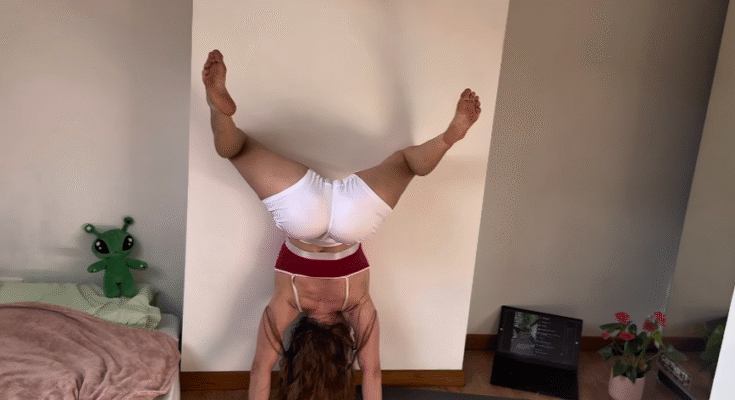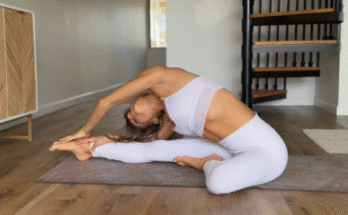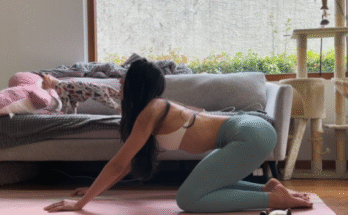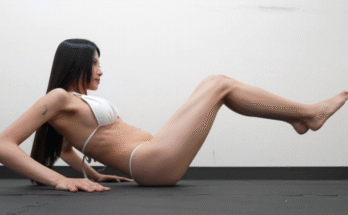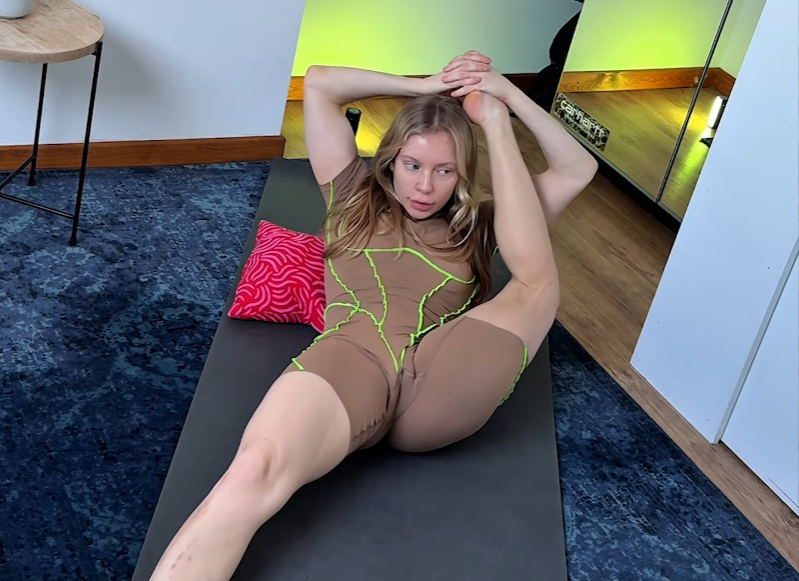
In today’s fast-paced world, finding time to exercise can feel impossible. Gyms are often crowded, memberships expensive, and schedules unpredictable. However, maintaining flexibility, strength, and overall fitness doesn’t necessarily require a gym. Gymnastics and stretching at home offer a practical and effective solution, allowing anyone to build strength, improve flexibility, and enjoy physical activity without leaving their living space.
The Benefits of Home Gymnastics and Stretching
Gymnastics is commonly associated with Olympic athletes performing impressive flips and routines, but its principles can be applied to everyday fitness. At its core, gymnastics emphasizes body control, flexibility, balance, and strength. Practicing gymnastics at home—even at a beginner level—offers many benefits:
- Improved Flexibility: Regular stretching and gymnastics movements help lengthen muscles, improving the range of motion in joints. This reduces the risk of injuries and makes everyday activities easier.
- Increased Strength: Bodyweight exercises, such as handstands, bridges, and planks, build muscle without requiring heavy weights. Strengthening your core, arms, and legs improves posture and overall physical resilience.
- Better Coordination and Balance: Gymnastics challenges the body to maintain control through dynamic movements, which enhances coordination and balance. These skills translate into better performance in other sports and daily life.
- Stress Relief: Stretching increases blood flow and relaxes muscles, while focused gymnastic movements engage the mind, promoting mindfulness and reducing stress.
Getting Started: Essential Equipment and Space
One of the best aspects of practicing gymnastics and stretching at home is that it requires minimal equipment. A few basic items can create a safe and effective practice space:
- Yoga Mat or Soft Surface: This provides cushioning for joints during floor exercises like bridges, splits, and rolls.
- Resistance Bands: These assist in stretching and strengthening muscles safely.
- Wall or Sturdy Furniture: Support for handstands or balance exercises.
- Mirror (Optional): Helps monitor form and alignment to avoid injury.
A small open space—about the size of a living room or bedroom—can be sufficient to perform a wide variety of exercises. Safety is crucial, so ensure the area is free of obstacles and sharp objects.
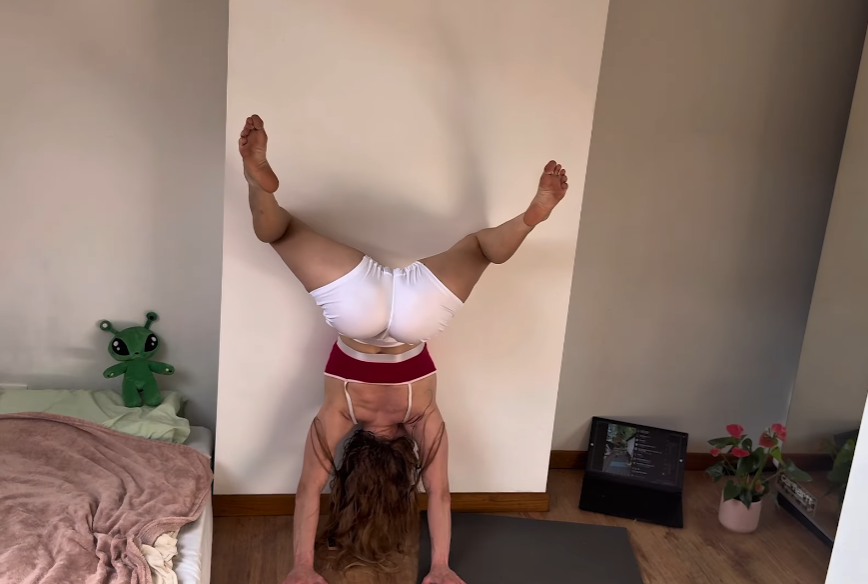
Warm-Up: Preparing Your Body
Before diving into gymnastics or intense stretching, warming up the body is essential. A proper warm-up increases blood flow to muscles, reduces the risk of injury, and prepares the joints for movement. A typical home warm-up might include:
- Jogging in Place (2–3 minutes): Light cardio to raise your heart rate.
- Arm Circles: Small to large circles to loosen the shoulders.
- Leg Swings: Forward, backward, and sideways to mobilize the hips.
- Cat-Cow Stretches: Gentle spinal movements to wake up the back and core.
Once your body feels warm and flexible, you’re ready to move into gymnastics or stretching exercises.
Stretching at Home: Simple Routines
Stretching doesn’t have to be complicated. A balanced routine should target major muscle groups while focusing on both flexibility and relaxation. Here’s a sample stretching routine you can follow at home:
- Neck Stretch: Slowly tilt your head to the left, then right, holding for 15–20 seconds on each side. This reduces tension from daily activities like working on a computer.
- Shoulder Stretch: Bring one arm across your chest, holding it with the opposite arm for 20 seconds. Repeat on the other side.
- Hamstring Stretch: Sit on the floor with legs extended. Reach for your toes while keeping your back straight. Hold for 30 seconds.
- Quadriceps Stretch: Standing on one leg, pull your opposite foot toward your glutes, keeping knees aligned. Hold for 20–30 seconds per leg.
- Back Stretch (Child’s Pose): Kneel and sit back on your heels, extending your arms forward and relaxing your back. Hold for 30–60 seconds.
- Hip Flexor Stretch: Step one foot forward into a lunge, keeping the back leg straight. Lean gently forward, holding for 20–30 seconds per side.
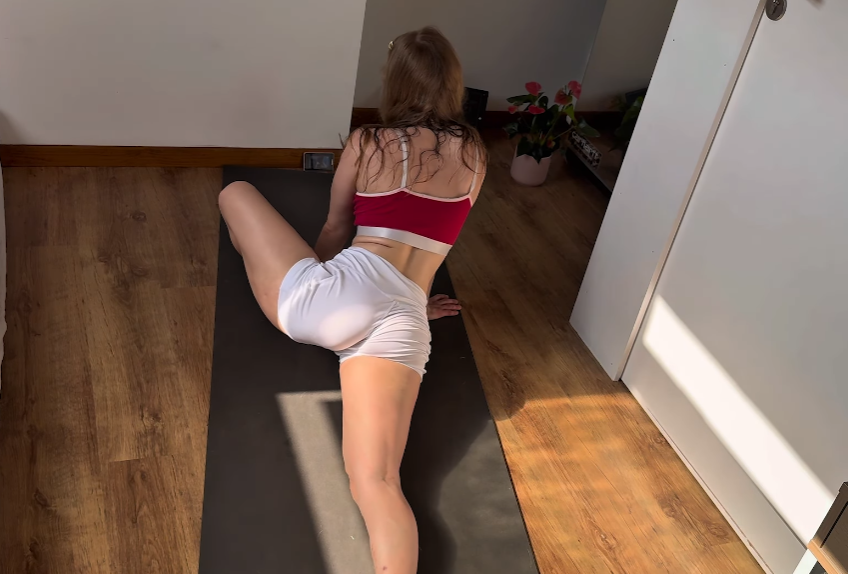
Gymnastics Moves at Home
For those looking to combine strength and flexibility, gymnastics-inspired exercises are a perfect choice. Here are beginner-friendly moves you can practice safely at home:
- Bridges: Lie on your back, bend your knees, and place your feet flat on the floor. Push your hips upward while lifting your chest and shoulders. Bridges strengthen the spine, glutes, and shoulders.
- Handstands Against the Wall: Place your hands on the floor about a foot away from a wall. Kick up gently, using the wall for support. Handstands improve shoulder stability, arm strength, and balance.
- Cartwheels: Start slowly, practicing on a soft surface. Cartwheels develop coordination and upper-body strength while adding a playful element to your practice.
- Forward Rolls: A classic gymnastics move that strengthens the core and promotes spatial awareness. Keep your chin tucked and roll over your back smoothly.
- Leg Lifts: Lie on your back and lift your legs straight up, engaging your core. This move improves abdominal strength, balance, and flexibility in the hamstrings.
Creating a Daily Routine
Consistency is key to seeing progress in gymnastics and flexibility. A daily routine doesn’t have to be long; even 20–30 minutes per day can make a noticeable difference over time. A suggested daily routine might look like this:
- Warm-Up (5 minutes): Light cardio and dynamic stretches.
- Stretching (10 minutes): Target all major muscle groups.
- Gymnastics Moves (10–15 minutes): Focus on one or two movements per session, gradually increasing difficulty.
- Cool-Down (5 minutes): Gentle stretches and deep breathing to relax muscles.
As you gain strength and confidence, you can add more complex moves, longer hold times, or increased repetitions. Remember to listen to your body and avoid pushing beyond your limits, as this could cause injury.
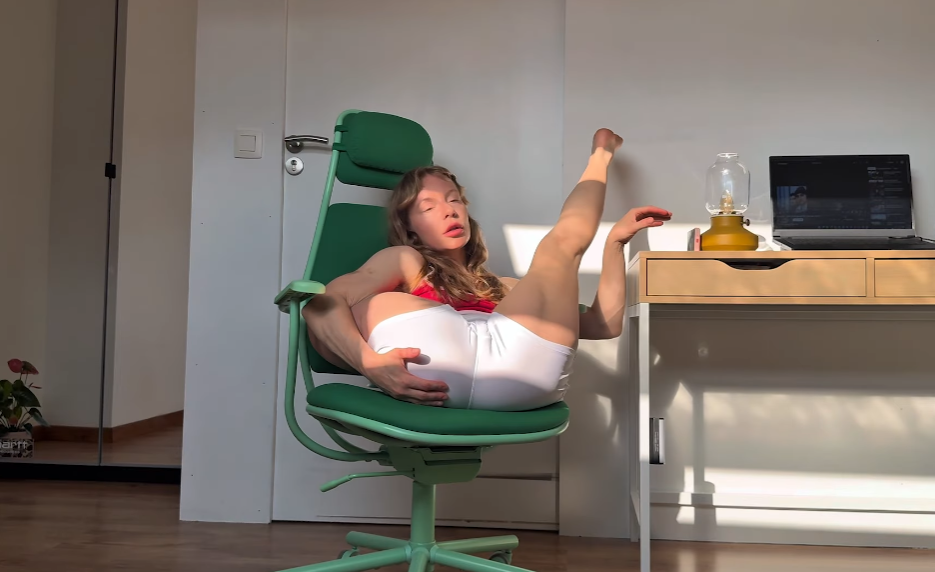
Motivation and Mindset
One of the most challenging aspects of exercising at home is staying motivated. To maintain a consistent routine, consider these tips:
- Set Clear Goals: Whether it’s touching your toes, holding a handstand, or mastering a cartwheel, a tangible goal gives you direction.
- Track Progress: Keep a journal of your exercises, flexibility levels, and achievements. Watching improvement over time boosts motivation.
- Make It Fun: Incorporate music, playful challenges, or family participation to keep the practice enjoyable.
- Celebrate Small Wins: Every new stretch or skill achieved is progress. Celebrate even minor accomplishments to maintain enthusiasm.
Conclusion
Gymnastics and stretching at home offer more than just physical benefits. They improve body awareness, build confidence, and provide a sense of accomplishment. With minimal equipment, a small space, and a consistent routine, anyone can develop strength, flexibility, and balance without stepping into a gym.
Starting at your own pace, listening to your body, and enjoying the process will ensure that gymnastics and stretching at home become not just a routine but a joyful part of your daily life. Whether you aim to increase flexibility, reduce stress, or simply add movement to your day, home-based gymnastics and stretching provide a versatile, effective, and rewarding way to keep your body and mind in harmony.
